Medium format film photo in the near infrared spectrum
I have been interested in photography since early childhood. Since I got everything I wanted from digital photography, I had an idea to try to restore the processing of BW film at home.
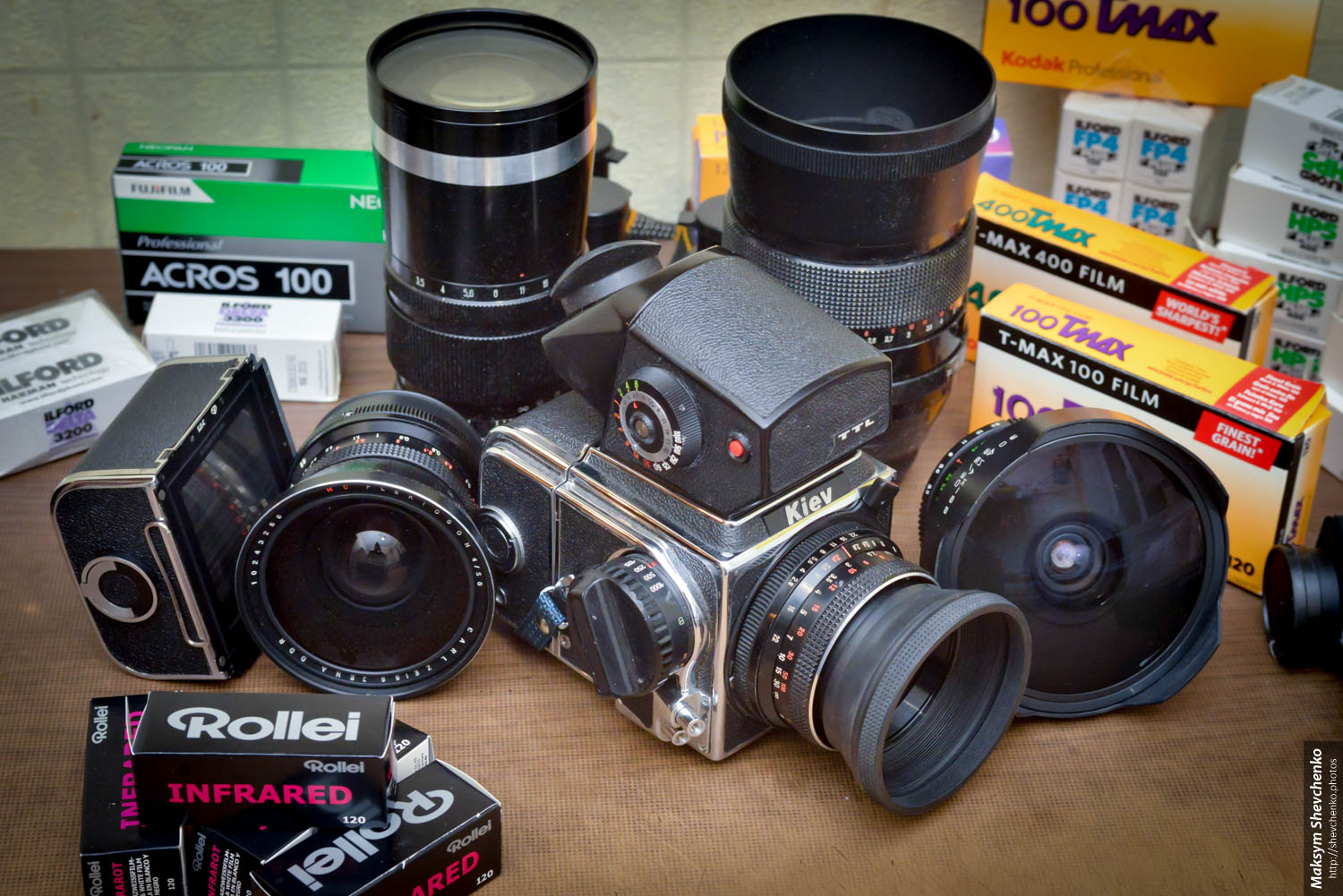
It took a couple of months to search for a medium format camera for reasonable money (I have a half cabinet under the narrow one, from Zenith to Nikon F100, but it doesn’t give that quality). As a result, he won the Kiev-88SM with a good set of optics. What is important, complete with the camera was the phone of the person who collected it.
In contrast to digital photography, in film it is very important to choose the right pair of film-developer. On eBay, I bought samples of almost all of the available film. The developer, T-Max, and the washing were bundled with the camera.
I got a lot of optics, but for the time being I only got the best result with this lens.
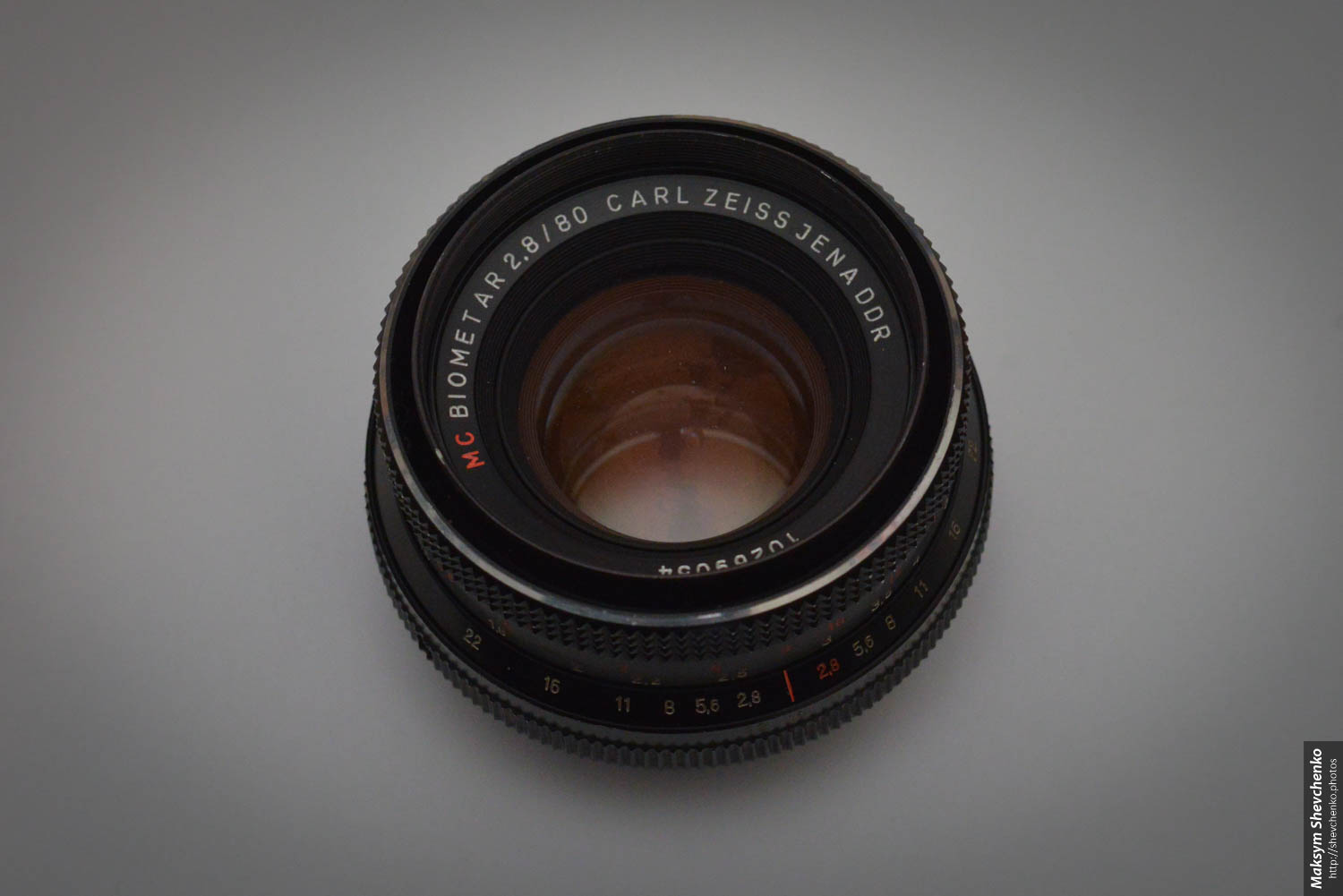
Somewhere halfway, I came across such a film .
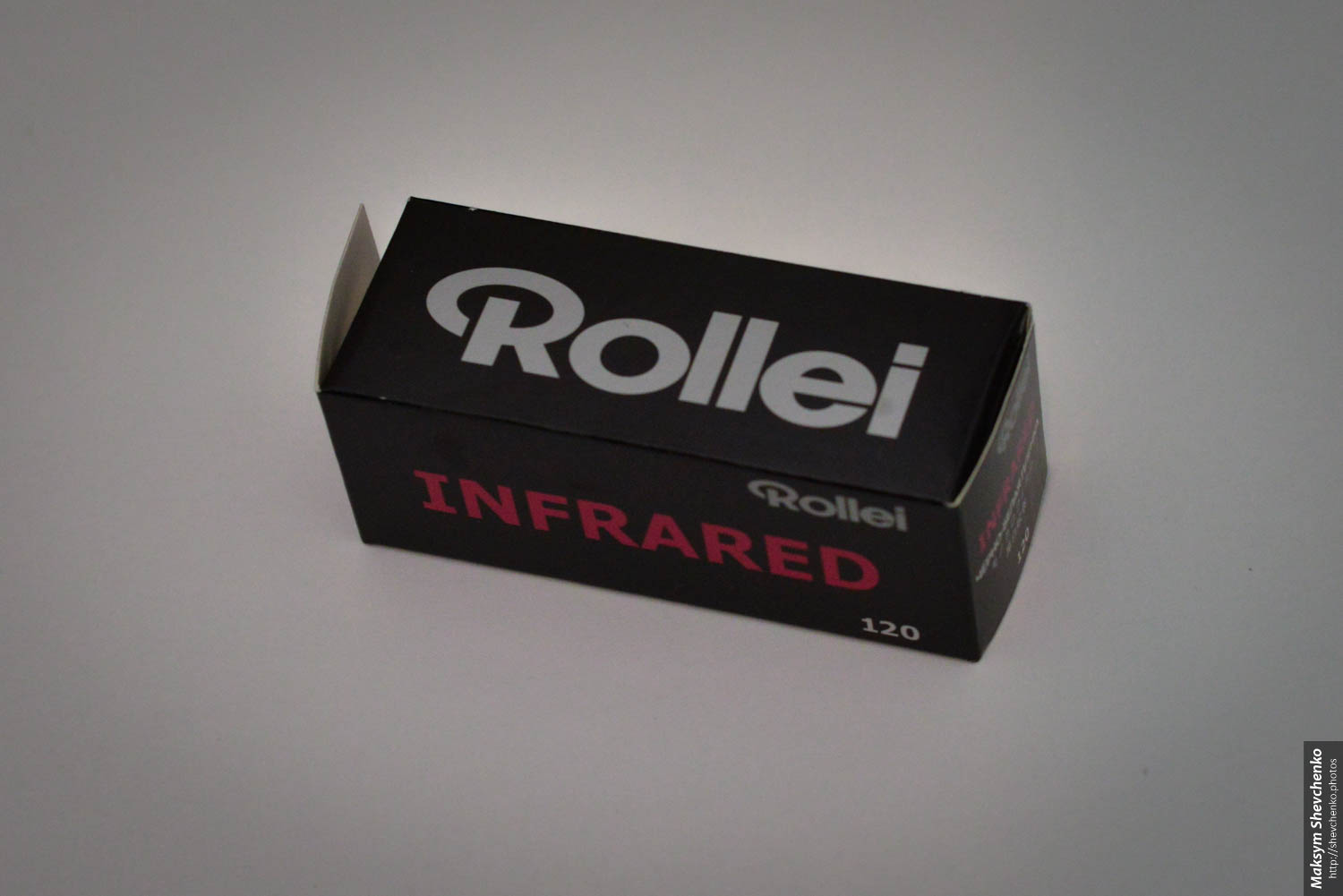
This film is sensitive to the near infrared spectrum in the range of 720-800 nm.
Here is the spectrum perceived by the human eye:

Here is the sensitivity of this film depending on the wavelength:
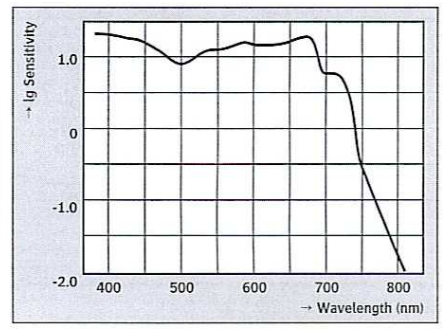
If it is used without a special filter, the result will differ little from the usual BW film. For something interesting, it is recommended to use it with an IR720 light filter. Here is its transmission spectrum depending on the wavelength:
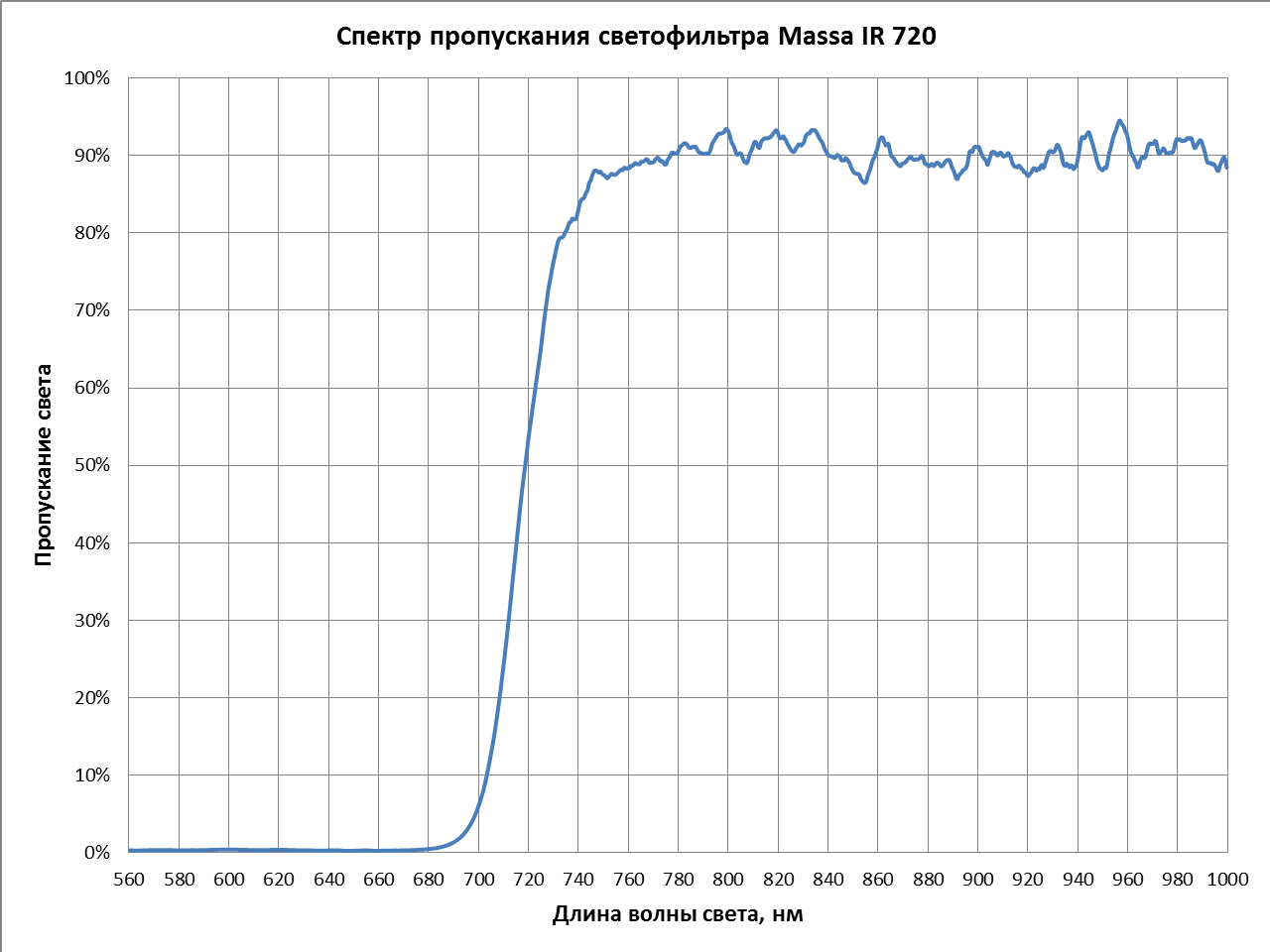
I got three of these filters:
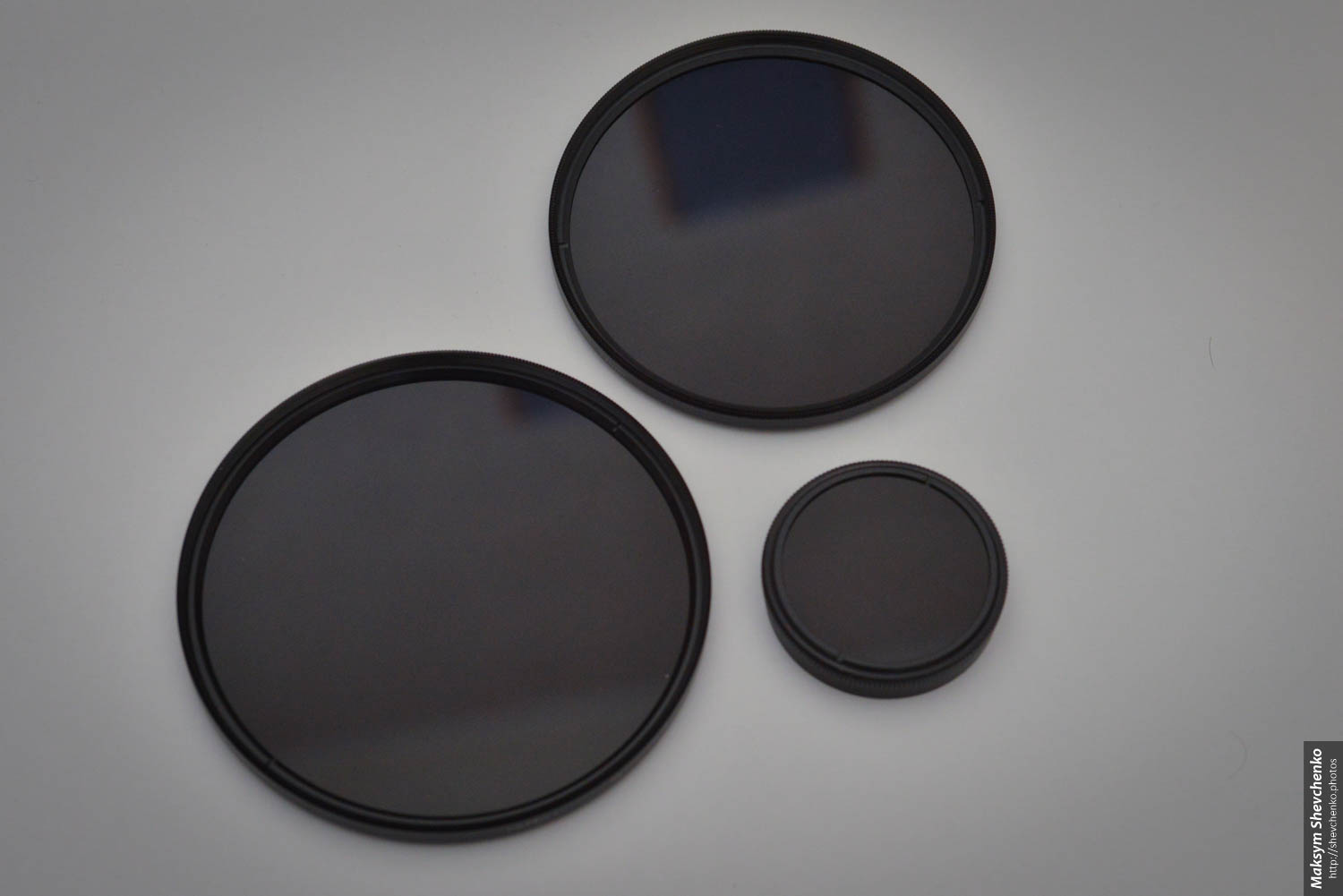
The rightmost one is a light filter for the Zodiac-8 30mm F3.5 fisheye lens. In it, the filter mount is on the film side. Filters, except for the four that come in the kit, for it you will not find. I had to disassemble one of the complete filters and pick up the glass from the filter purchased on eBay with a different frame.
In the photo above it seems that the filters are opaque. This is not true. In this photo, I accidentally managed to catch the reflection passing through the filter.

With the exception of the Zodiac 8 lens, you can do with one filter for all lenses.
Buy a filter on the largest diameter and to him a pile of raising rings.
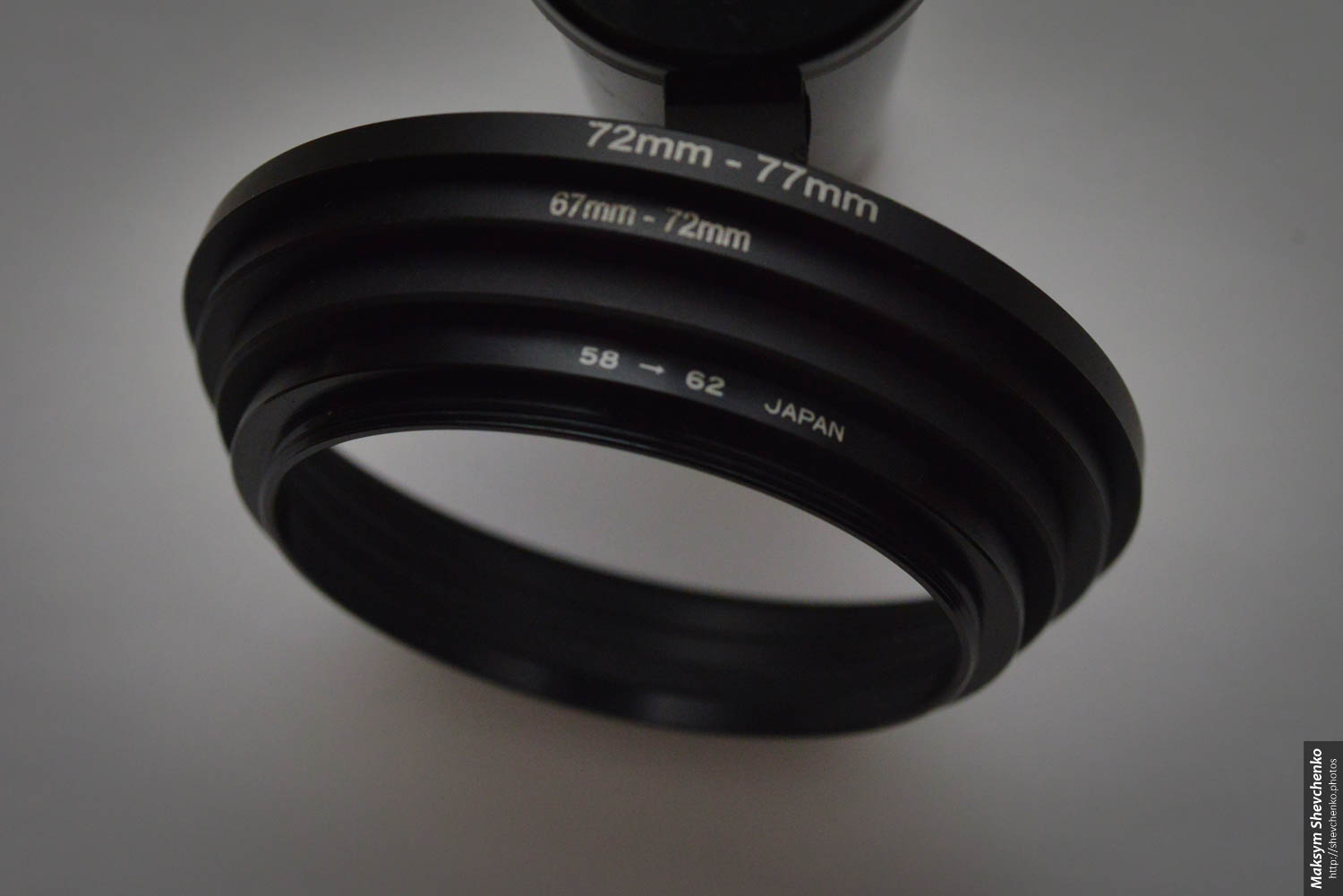
Having gathered all the fanties together we can look into the viewfinder! In order to see almost nothing! ;) Therefore, for filming, I recommend choosing sunny, cloudless days.
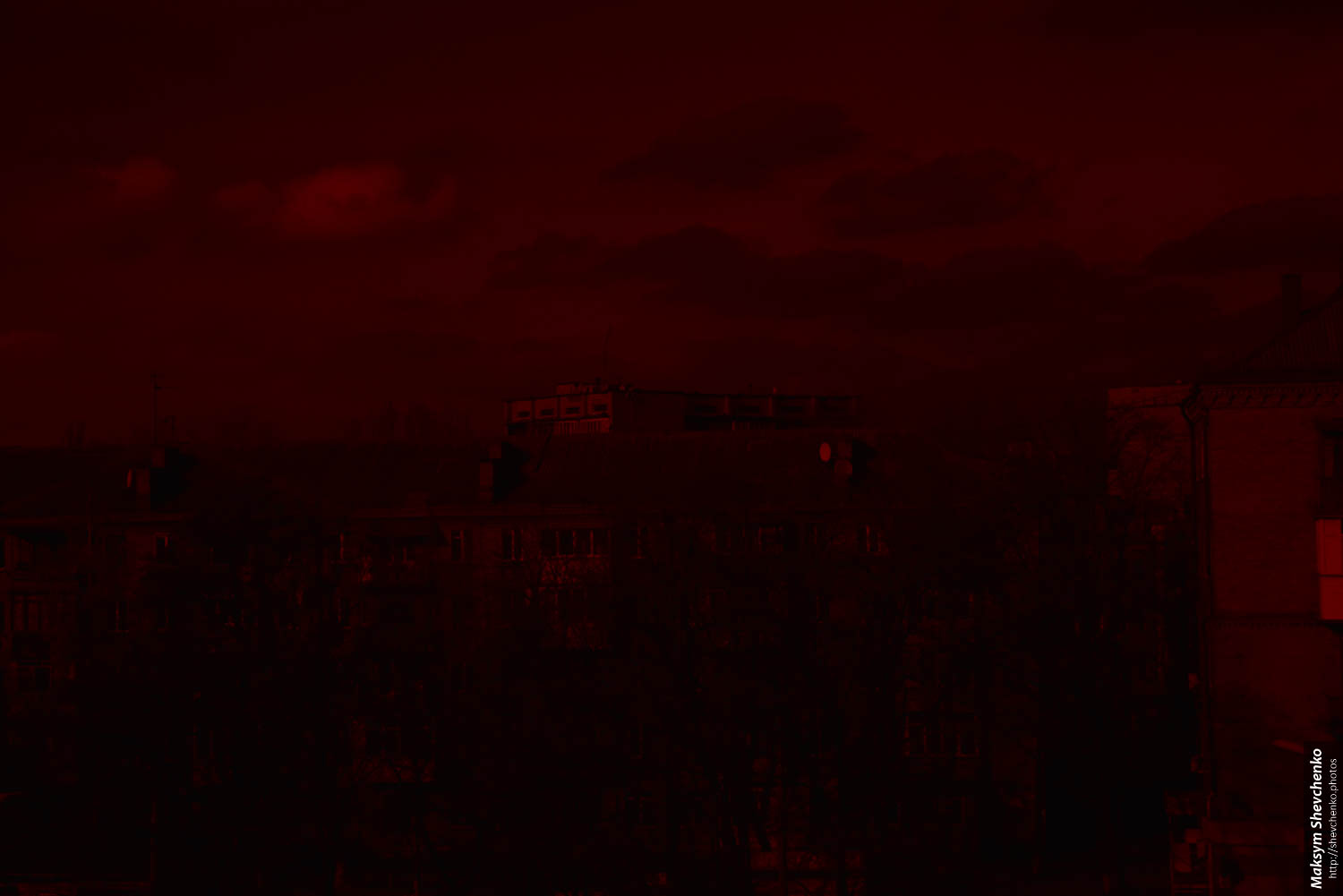
What do you want? We are going to shoot in the invisible range! Well, almost invisible! Interestingly, TTL exposure metering in this range works very well.
In order to use the built-in light meter on Kiev-88SM, you need to set the internal (black circle) to ISO 400. Rotate the metal ring so that the red arrow points to the current maximum aperture of the lens.
Press the red button (bydysch ). Aim the camera at the subject and rotate the outer black ring until we see two glowing LEDs in the viewfinder. Well, or almost two. It is necessary to catch the moment when one turns off and the second turns on. After that, from the outer rings, select the exopopar we like. For example, in the case of the photo below, it will be shutter speed 1/60 with aperture of 4. Or 1/125 with aperture of 2.8. After that, cock the bolt. We expose the shutter speed on the camera and the aperture on the lens.
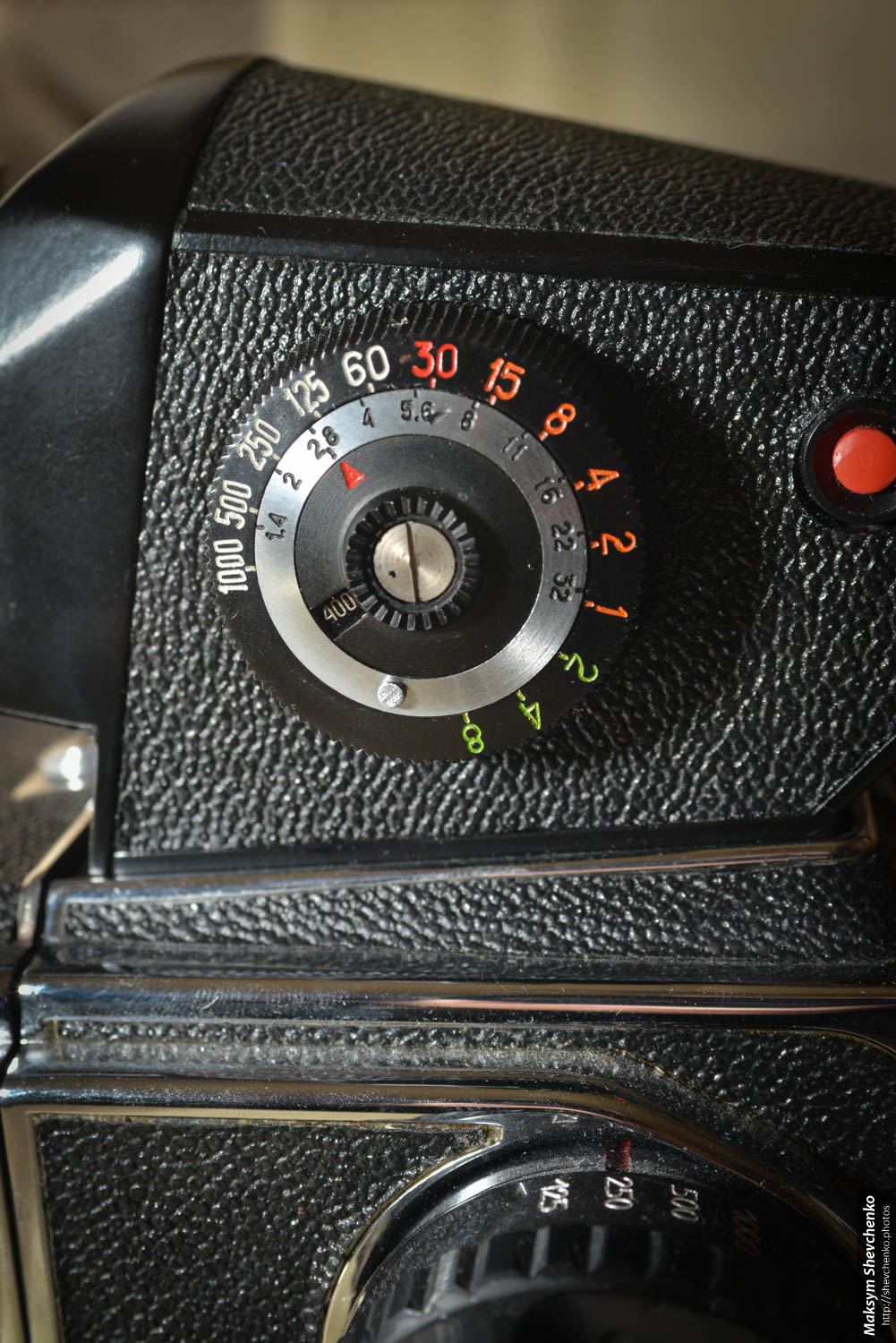
If you have an external exposure meter, you can use it without unscrewing the filter from the camera for each measurement. To do this, you need to set it to ISO 25. The metering will be correct. Do not forget to only put back ISO 400 when you take a filter from a camera in order to take a photo in the usual spectrum.
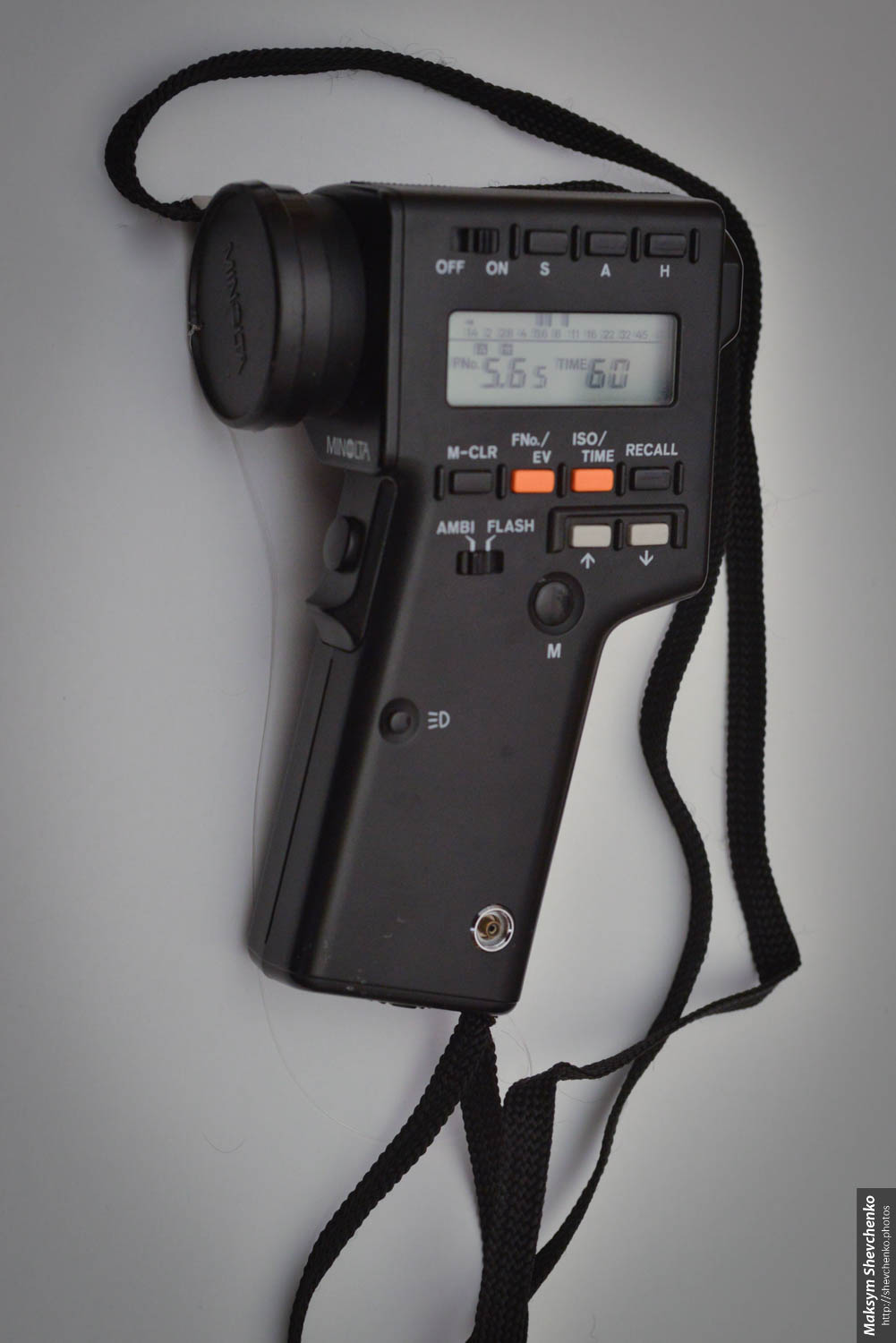
And the film is filmed! How we want to see what happened! To do this, we needto cook meth chemistry. From left to right - developer, washing, fixer:

We part them as it is written on banks. We will need half a liter of each solution:
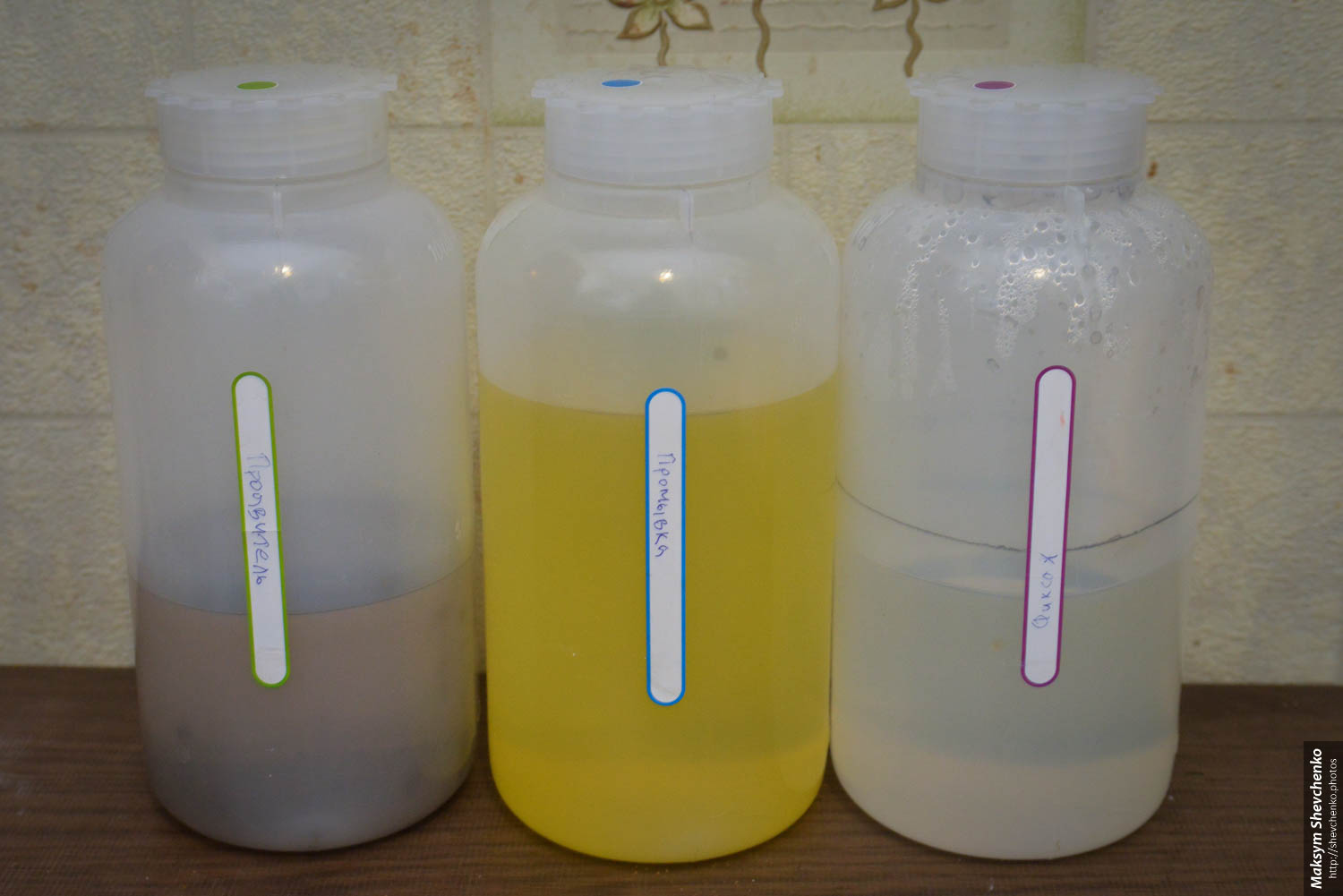
Dilute best with distilled water. It can be found in the household or at the gas station.
To accurately measure the right amount of ingredients we use chemical dishes. In principle, you can do with one half-liter measuring cup:

The processes are designed for a temperature of 20 degrees Celsius. For other temperatures there are correction formulas, but I don’t bother with that.
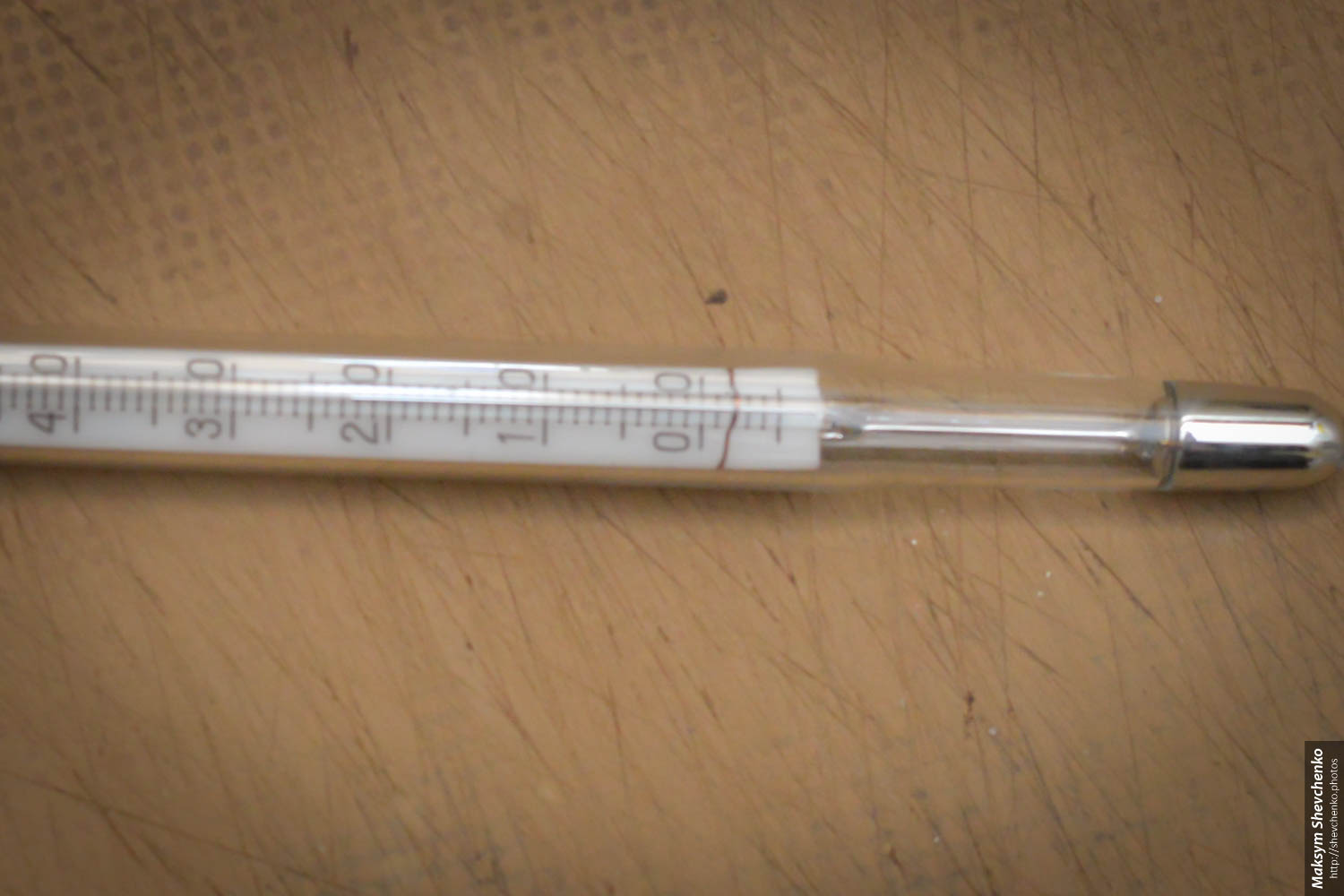
We will need a thermometer with a division of 1 degree. I found on OLX. In order to warm or cool the solutions, put them in a water bath. Small differences from 20 degrees are not lethal. I did not notice the difference in the result at the 19th or 21st.
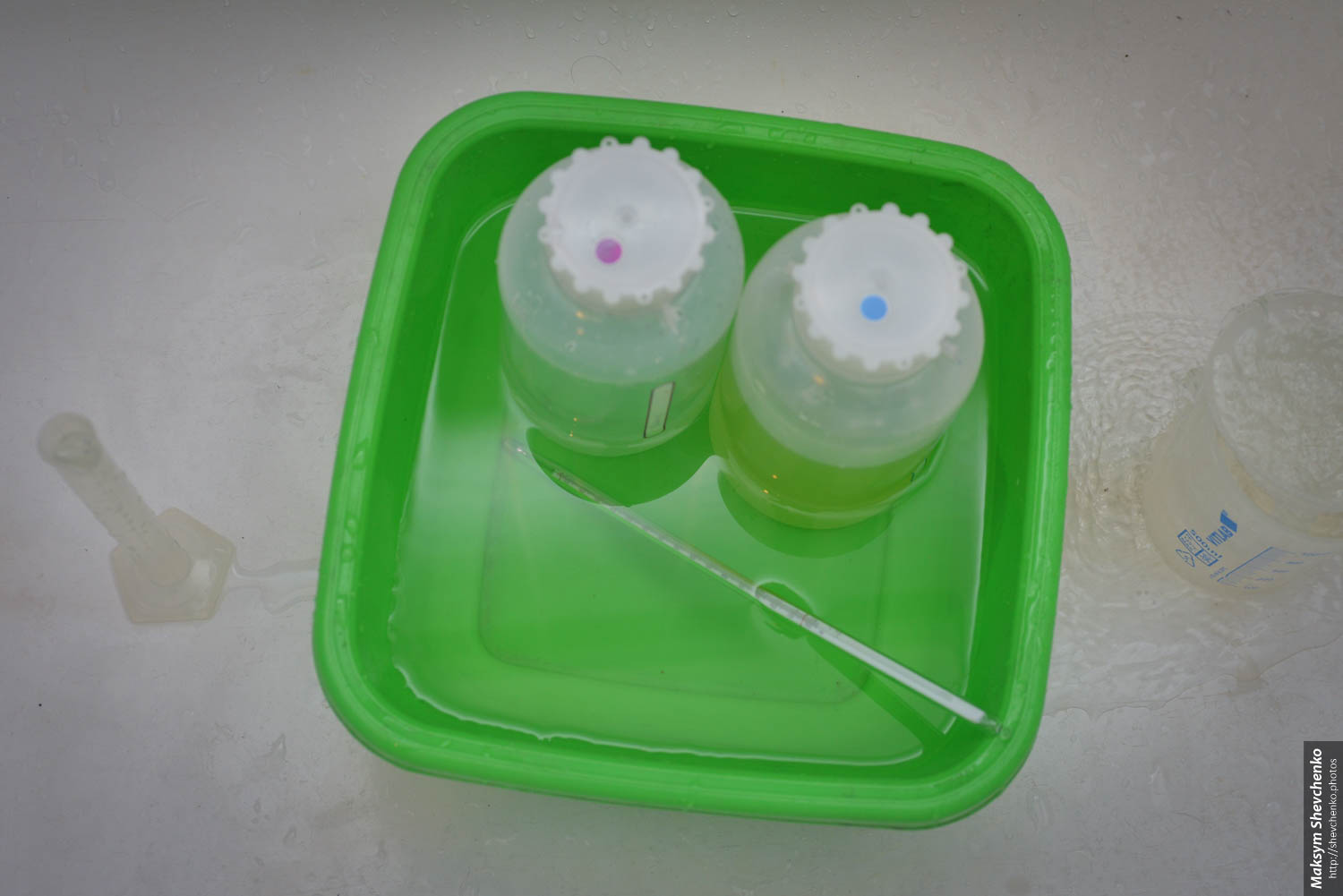
While banks with solutions bathe, we charge the film in the tank. I have this one. Its advantage is that it can charge two narrow films at once. The average format, unfortunately, is only one. Attention! Hands and tank should be dry!

In order not to light the film, we hide everything here in such a Chinese product. We do everything by touch. For the first time I recommend to fumble one film and make it in the light. This is better than messing up the captured film.

I cut the corners of the film with nail scissors. So it is easier to go into the reel.
If you have an electronic clock, do not forget to remove them.
If you do not have such a Chinese product, you can charge the film in the tank with your hands in your jacket.
and locked in the bathroom with the lights off.
The developer of the desired temperature. The film is charged. There comes a crucial moment - development. Go to the site . Choose our film and developer. Watch the development time. In my case, for Rollei Infrared IR400 and T-Max developer (not RS!) At 1 + 4, it will be 12 minutes.
Fill the developer. The first minute we chat for 45 seconds. Then we wait. Then we chat again. Then we wait again ... and so on. The main thing is not to forget to turn on any timer;)
The orthodox have their own hanging patterns. But, I will tell you that the most important thing is chatting in the first minute. It is necessary to remove air bubbles from the film.
12 minutes have expired. Pour the developerinto the toilet back into the jar. In T-Max, you can show a lot of films and it is well stored in the refrigerator.
Fill flushing. Stir for one minute and pour the washing back into the jar.
After that, I wash the film with running water. (It is still early to open the bachek!) And fill the fixative for 5 minutes. Stir periodically. Merge fiscage back to the jar.
Now you can open the bachek. We put it for ten to fifteen minutes under running water.
While all the chemistry with which we fed her is washed out of the film, you can hide the cans in the fridge and roll up the puddles from the floor and the kitchen table (+100 with your wife, look - I washed the floors!).
Before taking the film, I take another step. I add a drop of rinse for the dishwasher. This is my know-how. No streaks on tapes from dried water!
Finally, we unfold the film and hang it to dry. I do this:
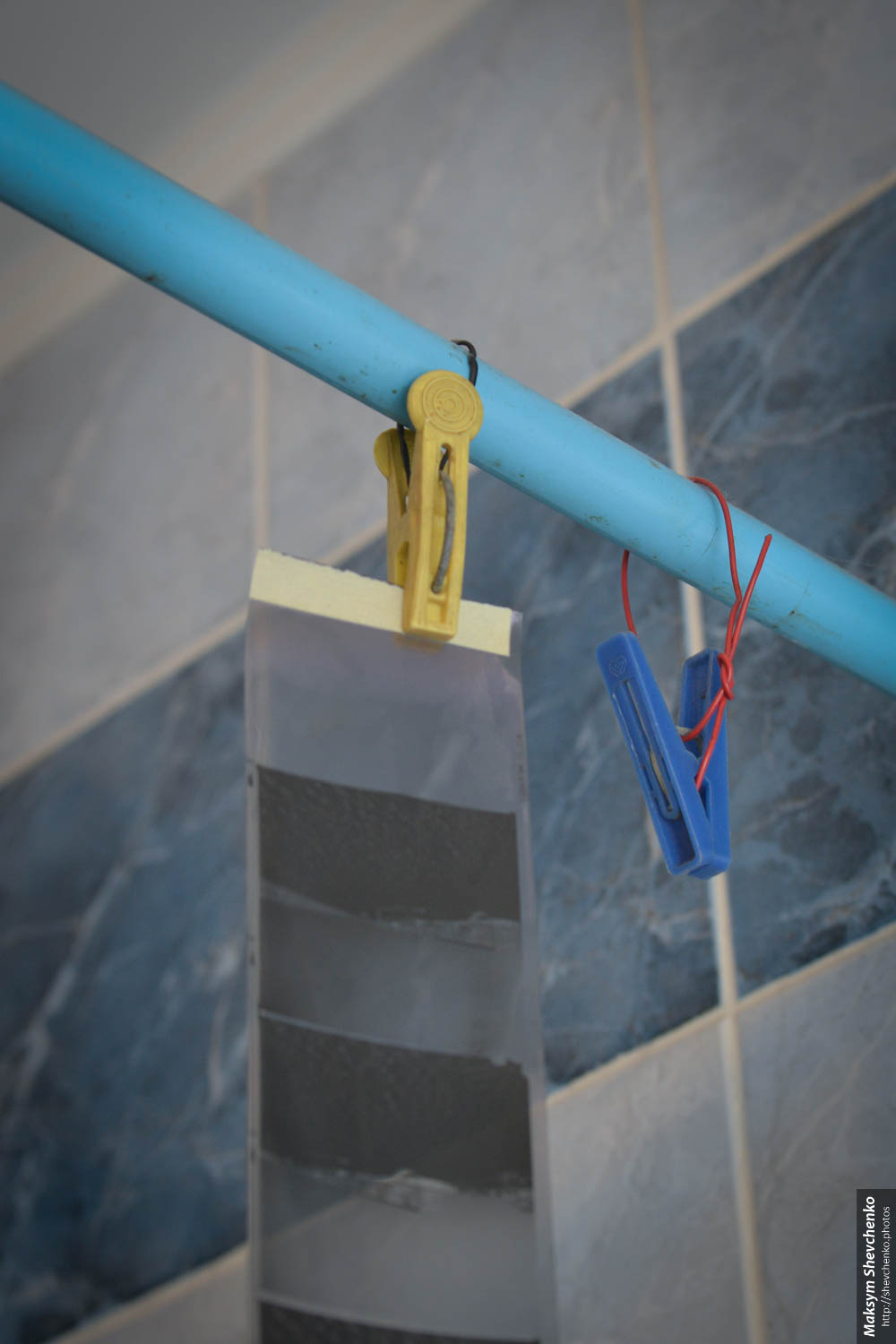

Modern films have a good substrate and a little twisted.
What to do next with the negatives? The film can be given for scanning. They will scratch you. I scan myself. To do this, purchased a scanner Canon 9000F. Scan the average format he can out of the box. True, if you have a film that is twisted in width (there is no parallelism to the scanner glass) I recommend to purchase such a product with anti-Newtonian glass:
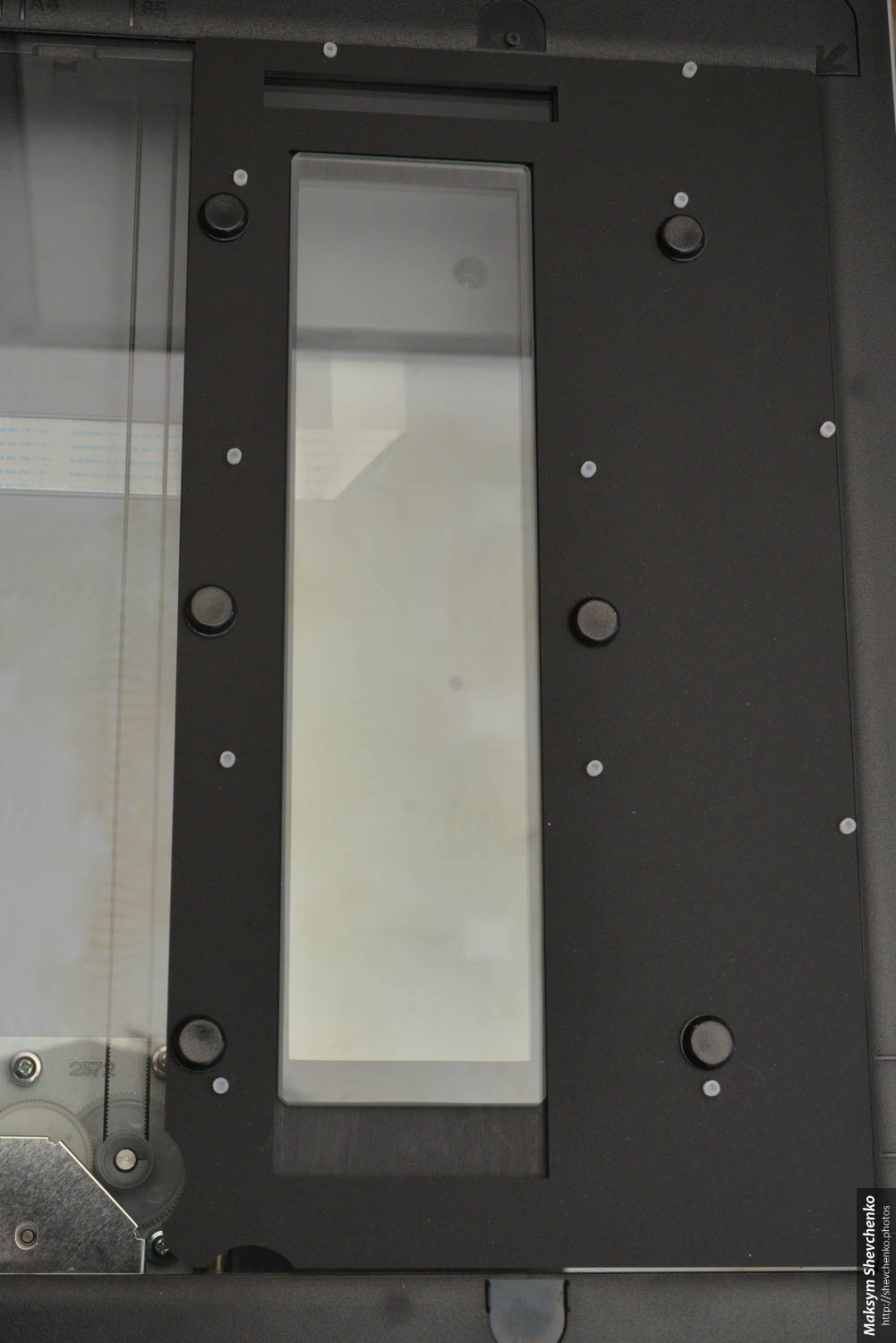
There are such files for storing negatives after scanning. They can also be found from the Chinese.
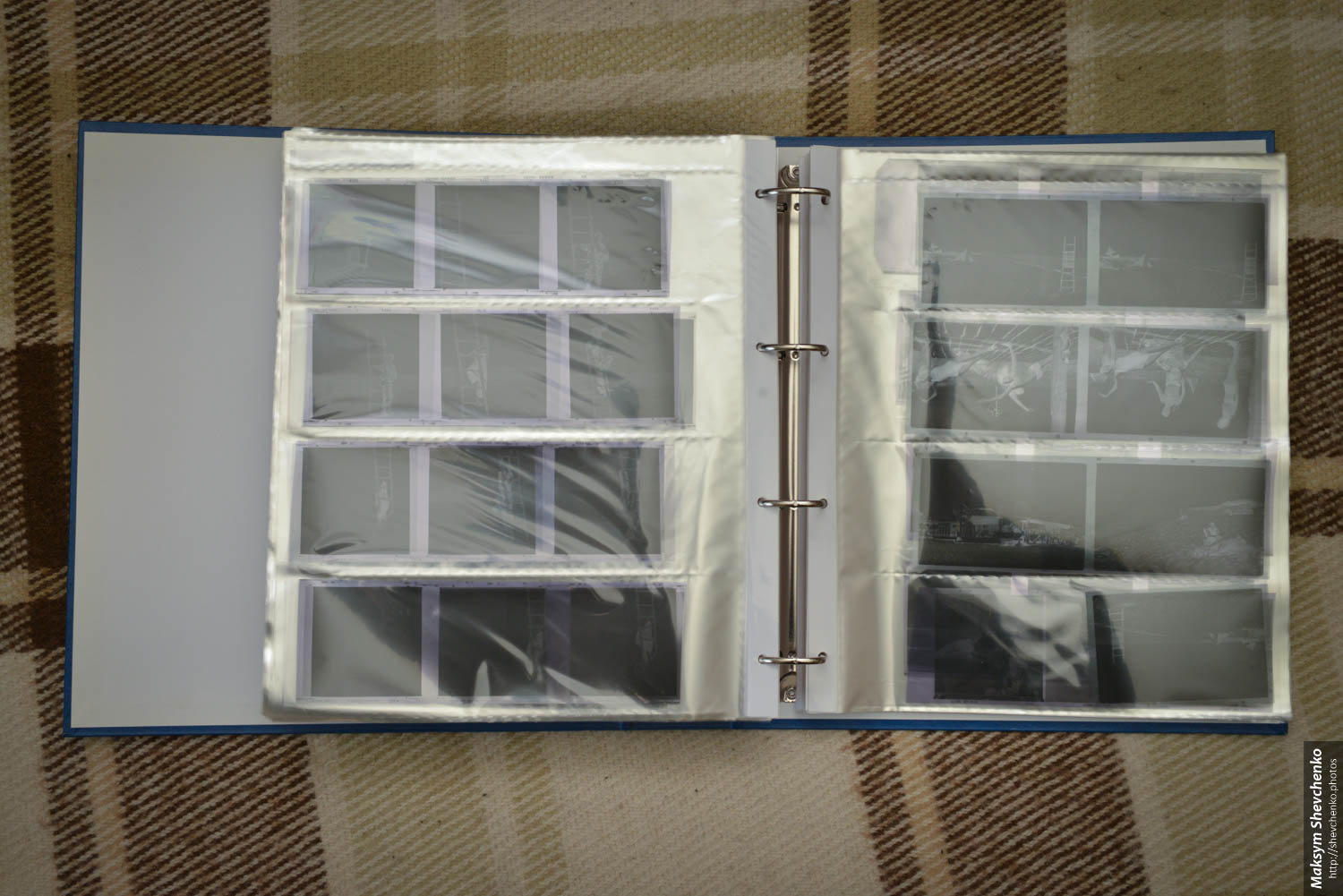
Scans with sharp optics correspond to approximately 30-40 megapixels.
But what did we do? Why this whole fuss? Attention! Spoilers!
Now I have plans to restore the B & W printing process at home. The enlarger is already lying, it remains the case for different trifles. Cuvettes, red lantern, glosser, timer, paper and chemistry.

It took a couple of months to search for a medium format camera for reasonable money (I have a half cabinet under the narrow one, from Zenith to Nikon F100, but it doesn’t give that quality). As a result, he won the Kiev-88SM with a good set of optics. What is important, complete with the camera was the phone of the person who collected it.
In contrast to digital photography, in film it is very important to choose the right pair of film-developer. On eBay, I bought samples of almost all of the available film. The developer, T-Max, and the washing were bundled with the camera.
I got a lot of optics, but for the time being I only got the best result with this lens.

Somewhere halfway, I came across such a film .

This film is sensitive to the near infrared spectrum in the range of 720-800 nm.
Here is the spectrum perceived by the human eye:

Here is the sensitivity of this film depending on the wavelength:

If it is used without a special filter, the result will differ little from the usual BW film. For something interesting, it is recommended to use it with an IR720 light filter. Here is its transmission spectrum depending on the wavelength:

I got three of these filters:

The rightmost one is a light filter for the Zodiac-8 30mm F3.5 fisheye lens. In it, the filter mount is on the film side. Filters, except for the four that come in the kit, for it you will not find. I had to disassemble one of the complete filters and pick up the glass from the filter purchased on eBay with a different frame.
In the photo above it seems that the filters are opaque. This is not true. In this photo, I accidentally managed to catch the reflection passing through the filter.

With the exception of the Zodiac 8 lens, you can do with one filter for all lenses.
Buy a filter on the largest diameter and to him a pile of raising rings.

Having gathered all the fanties together we can look into the viewfinder! In order to see almost nothing! ;) Therefore, for filming, I recommend choosing sunny, cloudless days.

What do you want? We are going to shoot in the invisible range! Well, almost invisible! Interestingly, TTL exposure metering in this range works very well.
In order to use the built-in light meter on Kiev-88SM, you need to set the internal (black circle) to ISO 400. Rotate the metal ring so that the red arrow points to the current maximum aperture of the lens.
Press the red button (

If you have an external exposure meter, you can use it without unscrewing the filter from the camera for each measurement. To do this, you need to set it to ISO 25. The metering will be correct. Do not forget to only put back ISO 400 when you take a filter from a camera in order to take a photo in the usual spectrum.

And the film is filmed! How we want to see what happened! To do this, we need

We part them as it is written on banks. We will need half a liter of each solution:

Dilute best with distilled water. It can be found in the household or at the gas station.
To accurately measure the right amount of ingredients we use chemical dishes. In principle, you can do with one half-liter measuring cup:

The processes are designed for a temperature of 20 degrees Celsius. For other temperatures there are correction formulas, but I don’t bother with that.

We will need a thermometer with a division of 1 degree. I found on OLX. In order to warm or cool the solutions, put them in a water bath. Small differences from 20 degrees are not lethal. I did not notice the difference in the result at the 19th or 21st.

While banks with solutions bathe, we charge the film in the tank. I have this one. Its advantage is that it can charge two narrow films at once. The average format, unfortunately, is only one. Attention! Hands and tank should be dry!

In order not to light the film, we hide everything here in such a Chinese product. We do everything by touch. For the first time I recommend to fumble one film and make it in the light. This is better than messing up the captured film.

I cut the corners of the film with nail scissors. So it is easier to go into the reel.
If you have an electronic clock, do not forget to remove them.
If you do not have such a Chinese product, you can charge the film in the tank with your hands in your jacket.
and locked in the bathroom with the lights off.
The developer of the desired temperature. The film is charged. There comes a crucial moment - development. Go to the site . Choose our film and developer. Watch the development time. In my case, for Rollei Infrared IR400 and T-Max developer (not RS!) At 1 + 4, it will be 12 minutes.
Fill the developer. The first minute we chat for 45 seconds. Then we wait. Then we chat again. Then we wait again ... and so on. The main thing is not to forget to turn on any timer;)
The orthodox have their own hanging patterns. But, I will tell you that the most important thing is chatting in the first minute. It is necessary to remove air bubbles from the film.
12 minutes have expired. Pour the developer
Fill flushing. Stir for one minute and pour the washing back into the jar.
After that, I wash the film with running water. (It is still early to open the bachek!) And fill the fixative for 5 minutes. Stir periodically. Merge fiscage back to the jar.
Now you can open the bachek. We put it for ten to fifteen minutes under running water.
While all the chemistry with which we fed her is washed out of the film, you can hide the cans in the fridge and roll up the puddles from the floor and the kitchen table (+100 with your wife, look - I washed the floors!).
Before taking the film, I take another step. I add a drop of rinse for the dishwasher. This is my know-how. No streaks on tapes from dried water!
Finally, we unfold the film and hang it to dry. I do this:


Modern films have a good substrate and a little twisted.
What to do next with the negatives? The film can be given for scanning. They will scratch you. I scan myself. To do this, purchased a scanner Canon 9000F. Scan the average format he can out of the box. True, if you have a film that is twisted in width (there is no parallelism to the scanner glass) I recommend to purchase such a product with anti-Newtonian glass:

There are such files for storing negatives after scanning. They can also be found from the Chinese.

Scans with sharp optics correspond to approximately 30-40 megapixels.
But what did we do? Why this whole fuss? Attention! Spoilers!
Lens MC Biometar 2.8 / 80 







Lens Sharp-8 3.5 / 30 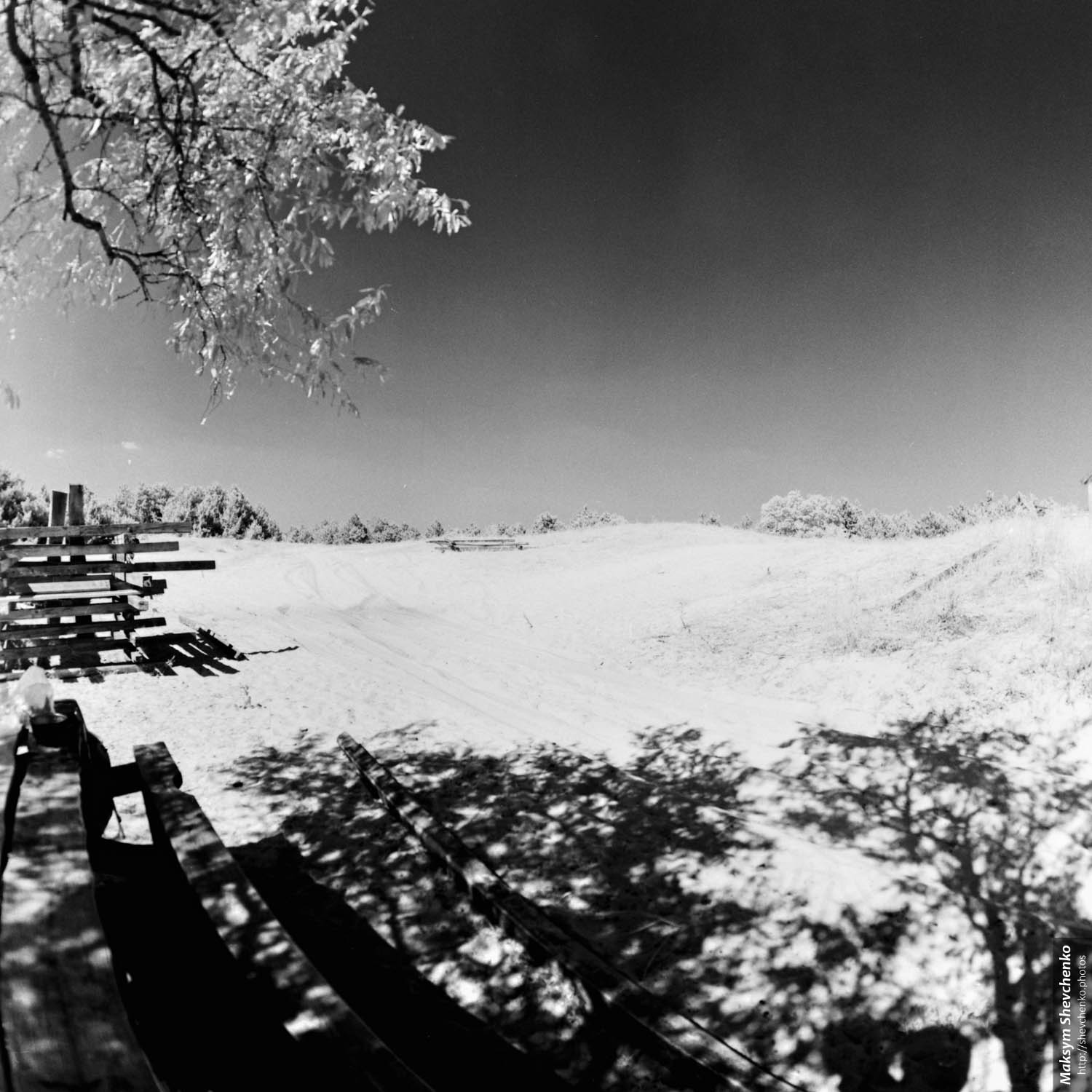
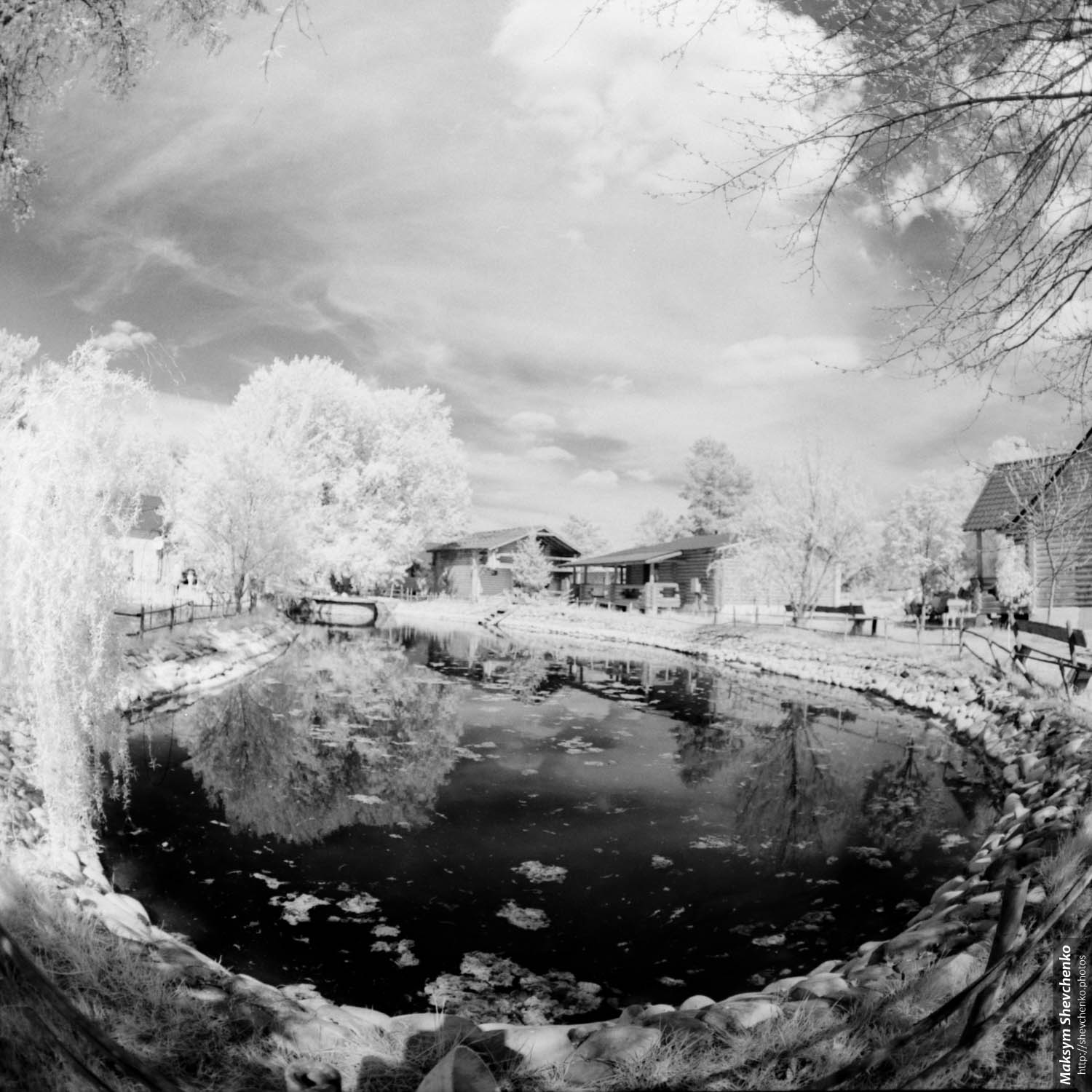


Now I have plans to restore the B & W printing process at home. The enlarger is already lying, it remains the case for different trifles. Cuvettes, red lantern, glosser, timer, paper and chemistry.
All Articles